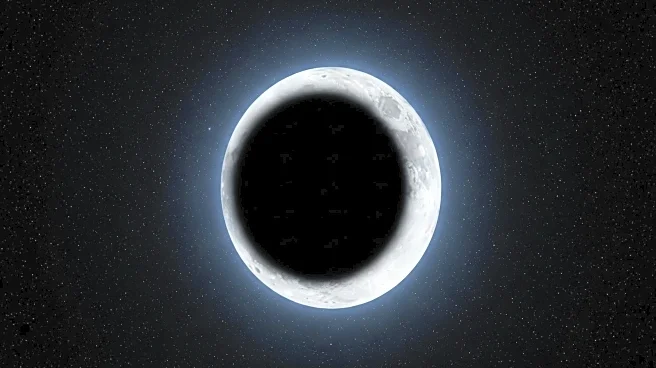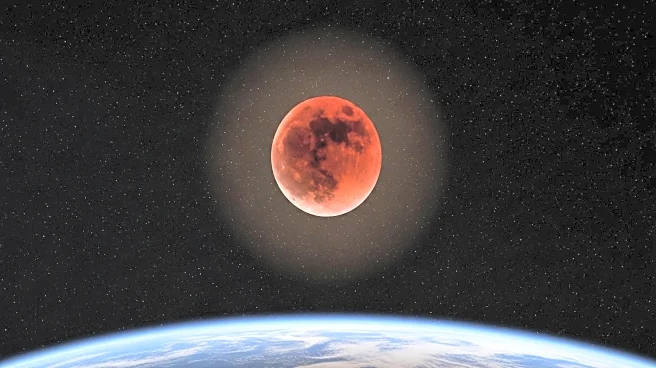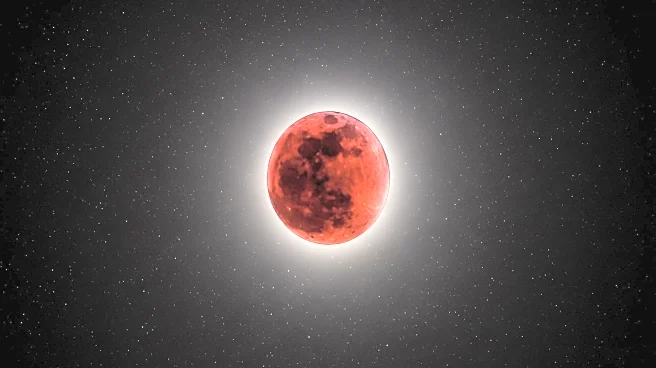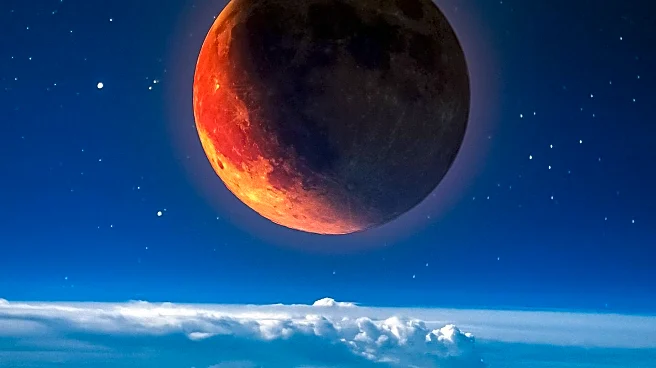What is the story about?
What's Happening?
A total lunar eclipse, known as a 'Blood Moon' due to its reddish appearance, is set to occur on September 7, 2025. This event marks the second and final total lunar eclipse of the year, lasting over five hours with 82 minutes of full totality. The eclipse will be visible in regions including India, China, Russia, western Australia, eastern Africa, and much of central Asia. The moon will enter Earth's shadow, creating the dramatic 'Blood Moon' effect. While North America will miss the full eclipse, the western tip of Alaska might catch a partial phase. The Virtual Telescope Project in Italy will broadcast the event online, allowing global viewers to witness the spectacle.
Why It's Important?
The 'Blood Moon' phenomenon is significant for astronomers and sky watchers, offering a rare opportunity to observe the moon's transformation during a total lunar eclipse. This event highlights the intricate dynamics of celestial alignments and provides educational insights into lunar and solar interactions. For regions able to view the eclipse, it presents a unique cultural and scientific experience, fostering interest in astronomy and space exploration. The event also underscores the importance of global cooperation in sharing astronomical data and experiences, as online broadcasts make the eclipse accessible to a wider audience.
What's Next?
Following this eclipse, the next total lunar eclipse visible in the United States will occur on March 2-3, 2026. This upcoming event will provide another opportunity for North American observers to experience the 'Blood Moon' phenomenon. Meanwhile, astronomers and enthusiasts will continue to study the effects of lunar eclipses on Earth's atmosphere and explore the potential for future celestial events. The ongoing interest in such phenomena may lead to increased public engagement with astronomy and related sciences.
AI Generated Content
Do you find this article useful?
















